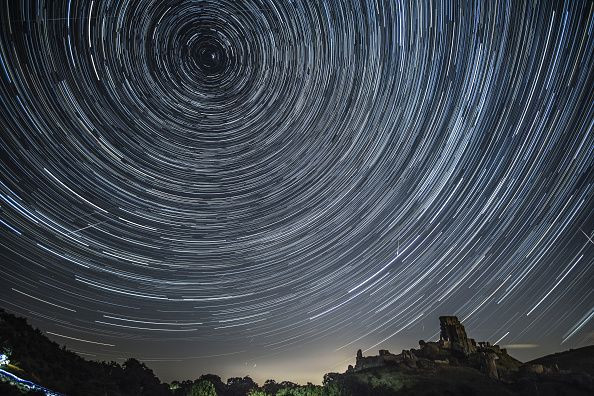Skywatching Events: September Highlights To Watch Out For, Including The 'Red Triangle'
KEY POINTS
- In the evenings, Saturn and Jupiter will grace the skies all month long
- On Sept. 9 night, Jupiter, Saturn and our moon will travel across the sky as a trio
- Sept. 23 will mark the equinox event
September brings an eventful month for skywatchers, as the following planets and celestial bodies will make their presence known in the sky.
One of the most exciting events lined up is the predicted "red triangle" that will form in the morning sky between Mars, Aldebaran and the famous Betelgeuse.
The "red" correlates to the colors of the celestial bodies that will form the triangle. For those of you who don't know, Aldebaran is almost orange-colored, and it is the star that is the eye of Taurus, the bull constellation. Mars is, of course, the red planet and Betelgeuse, in news for dimming, is also red.
Skywatching Highlights You Don’t Want To Miss: Aldebaran, Betelgeuse, Mars, Saturn and Jupiter https://t.co/VZKuiIZTbm
— SciTechDaily (@SciTechDaily1) September 4, 2022
At the start of the month, Mars will be visible in the sky in the south during dawn. As the month progresses, Mars will move eastward to form the red triangle with Betelgeuse and Aldebaran, and will then stay in the triangle for a month or so.
The morning of Sept. 11 will open a window of opportunity to view the moon and Jupiter together through binoculars. The moon will be within inches from Jupiter as observed from the sky.
Moreover, at this time of its cycle, Jupiter is at its biggest and brightest, which will make it perfect for telescope viewing. Those without a telescope can still watch the four moons of the planet clearly with the help of a good pair of binoculars. The moons will appear as little starlike lights next to Jupiter.
On a side note, Europa, one of the moons of Jupiter, has a NASA mission planned for it that is scheduled to launch in 2024. The Europa Clipper aircraft is currently under preparation, and will make dozens of flybys by Jupiter when launched. Its mission objective is to ascertain whether Europa has a suitable environment for life.
For your evening rendezvous, Saturn and Jupiter will grace the skies all month long.
On Sept. 9 night, Jupiter, Saturn and our moon will travel across the sky as a trio. They will rise together in the southeast as night falls, and then they will move toward the west through the course of the night. During the month, the trio will rise earlier in the east as night comes, with bright Jupiter visible low in the sky.
Sept. 23 will mark the equinox event, during which the duration of night and day will be the same. In the southern hemisphere, it will auger the start of spring, and in the northern hemisphere, it will be the beginning of fall. Equinoxes are bi-annual events, with the other being on March 21.
Get out for binoculars and telescopes, the heavens are up for viewing.

© Copyright IBTimes 2024. All rights reserved.





















